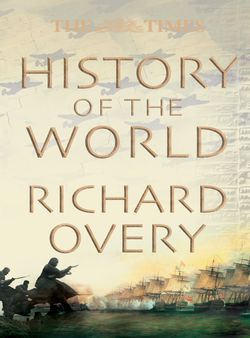Читать книгу The Times History of the World - Richard Overy - Страница 31
550 BC TO AD 752 THE COMMERCIAL AND CULTURAL BONDS OF EURASIA
ОглавлениеThe rulers of the empires of the ancient world had no commercial policies, and were seldom interested in trade. Yet the activities of traders, operating at the margins of society, and rarely mentioned in ancient literature, had a profound effect on the development of the world, transmitting not only goods, but also cultural ideas—and occasionally deadly organisms.
The quantity of goods passing across the Eurasian landmass varied enormously depending on the political conditions of the time. Between 200 BC and AD 200 stable regimes in the Roman Mediterranean, the Persian Parthian empire, the Kushan empire and China under the Han dynasty, helped to stabilize the routes between Europe, Persia and China. Such favourable conditions for the movement of goods and people did not recur until the 8th century AD. These earlier empires, however, were not directly interested in facilitating trade. Chinese campaigns in the area of the Silk Road in Sinkiang, north of Tibet, such as that of Pan Ch’ao against the Kushans in c. AD 90, confronted a military rather than a commercial threat. The Han emperors certainly wanted valuable commodities like horses from Ferghana, but they expected to receive them as diplomatic gifts, tribute or booty from war.
Since the time of Assyrian merchants in Anatolia in the second millennium BC there are examples of communities of traders who settled in foreign territories to import goods from their homelands. In the 8th century BC Greek and Phoenician trading posts were established across the Mediterranean for the same purpose. These “trade diasporas” made possible effective communication between different cultural groups. The people who made up the diaspora communities were not wealthy merchants, but of much lower status. The “Roman” traders who sailed across the Indian Ocean or visited the Chinese court would not have been Italians, but inhabitants of the eastern provinces, who were probably not even Roman citizens.
Trade was not the only way in which goods travelled across this route. The Han rulers of China maintained peace on their northwest frontier by regular gifts of large quantities of silk and lacquerware to the Hsiungnu tribes outside the Great Wall. Some items would have been passed on in dowries or as gifts, and gradually made their way to the Mediterranean where silken clothing was sought by Roman senators, much to the distaste of more austere emperors.
While silk was the major import from China to the Mediterranean, a variety of goods found their way westwards. The Roman writer Pliny (AD 23–79) complains that the desire for eastern goods was draining the empire of its gold and silver, but this is not supported by the archaeological evidence. Glass was certainly sought after, but slaves were probably also a significant item of trade, and there are references in Chinese sources to “Syrian jugglers” reaching the Chinese court.
MARITIME TRADE
Maritime trade developed at the same time as the overland routes, making increased use of the monsoons for trade between southern Arabia and south India. Vital information about the goods traded between the Roman empire and the east comes from A Voyage around the Red Sea, an anonymous handbook for traders written in the 1st century AD, which describes the coastal routes from the Egyptian Red Sea ports of Myos Hormus and Berenice to east Africa and the Ganges delta. The author knows of China as a vast city, but east of India his geographical knowledge is hazy.
The exchange of goods might have profound cultural effects. Begram in Gandhara was the location of the summer palace of the Kushan emperors. A rich hoard from there dating from around AD 100 included lacquer from China and ivory from India, as well as bronzes, glassware and pottery from the Mediterranean. The Kushan interest in Mediterranean artefacts illustrated by the Begram hoard had a profound effect on local practices, acting as a catalyst for the development of Gandharan art which emerged in the 2nd century AD, in part modelled on Greco-Roman styles.
